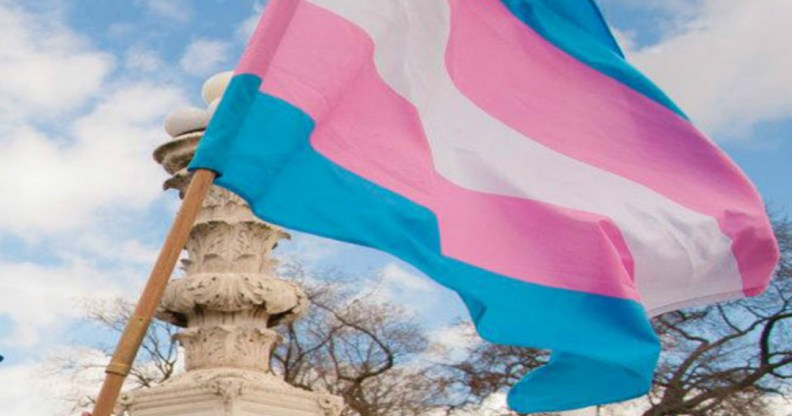What does trans mean and what is non-binary? Here’s how you can be respectful of transgender identities

Transgender Flag (Getty Images)
What is a trans man, what is a trans woman and what does non-binary mean? PinkNews answers all of these questions and offers some simple advice whether you’re questioning your own gender or know somebody who is.
Transgender people have existed since the dawn of time, but there are still many people who wonder what trans means exactly and are unsure of what non-binary identities are.
Let’s break it down and get into the nitty gritty.
What is trans?
Transgender, or trans for short, is an umbrella term used to describe people whose true gender does not align with the one they were assigned at birth.
The word transgender uses the Latin prefix ‘trans’, meaning ‘the other side of’, while cisgender – which describes a person whose identity aligns with the gender they were assigned at birth – uses its opposite ‘cis’, meaning ‘this side of’.
A transgender man is a man who was labelled as female when born due to his primary sex characteristics.
A transgender woman is a woman who was labelled as male when born due to her primary sex characteristics.
Trans men are mostly born with XX chromosomes usually attributed to women, and trans women are mostly born with XY chromosomes usually attributed to men. Intersex people may have variations on these characteristics, and can identify as binary or non-binary.
The word ‘transsexual’ has historically been used when talking about transgender people, but the word is notably outdated and many trans people now avoid using it for themselves or others.
So what does non-binary mean?
If you think of gender as a spectrum, male and female sit at either end (although this isn’t a hard and fast rule).
We think of these as the binary genders, and binary people tend to have quite fixed gender identities (transgender men and women are included in this along with cisgender men and women).
Non-binary people, on the other hand, can identify anywhere along the gender spectrum. In fact, some non-binary people see themselves as being entirely outside the notion of gender.
Like trans men and women, non-binary people can experience gender dysphoria.
Many enby (non-binary) folk use gender-neutral pronouns such as they/them or ze/zir, rather than the binary pronouns (he/him, she/her). But not all non-binary people use gender-neutral pronouns.
Some use he/him or she/her, while some non-binary people use he/him or she/her alongside gender-neutral pronouns such as they/them.
If a person tells you what their pronouns are, those pronouns aren’t ‘preferred’. There are no options other than the one given to you by the trans individual.
The ‘transgender experience’.
The most important thing to remember is that no trans person has the same experience.
Some trans men might enjoy wearing make-up, or some might want nothing more than to play football all day.
Some trans women might like race car driving, or watching Keeping Up With The Kardashians.
A person’s interests and appearance need not be defined by their gender.
Many trans people suffer from gender dysphoria, which can be alleviated in a variety of ways. Treatment can include (but are not limited to) hormone replacement therapy and gender-affirming surgeries.
However, it’s important to note that gender dysphoria manifests in different ways for each individual, and while it may be difficult to understand someone who doesn’t seem to experience discomfort in the exact same way as you, it doesn’t make them any less legitimate as a transgender person.
While many transgender and non-binary people choose to change their appearance, take hormones or have surgery, it’s not a required part of being trans.
How did this story make you feel?

